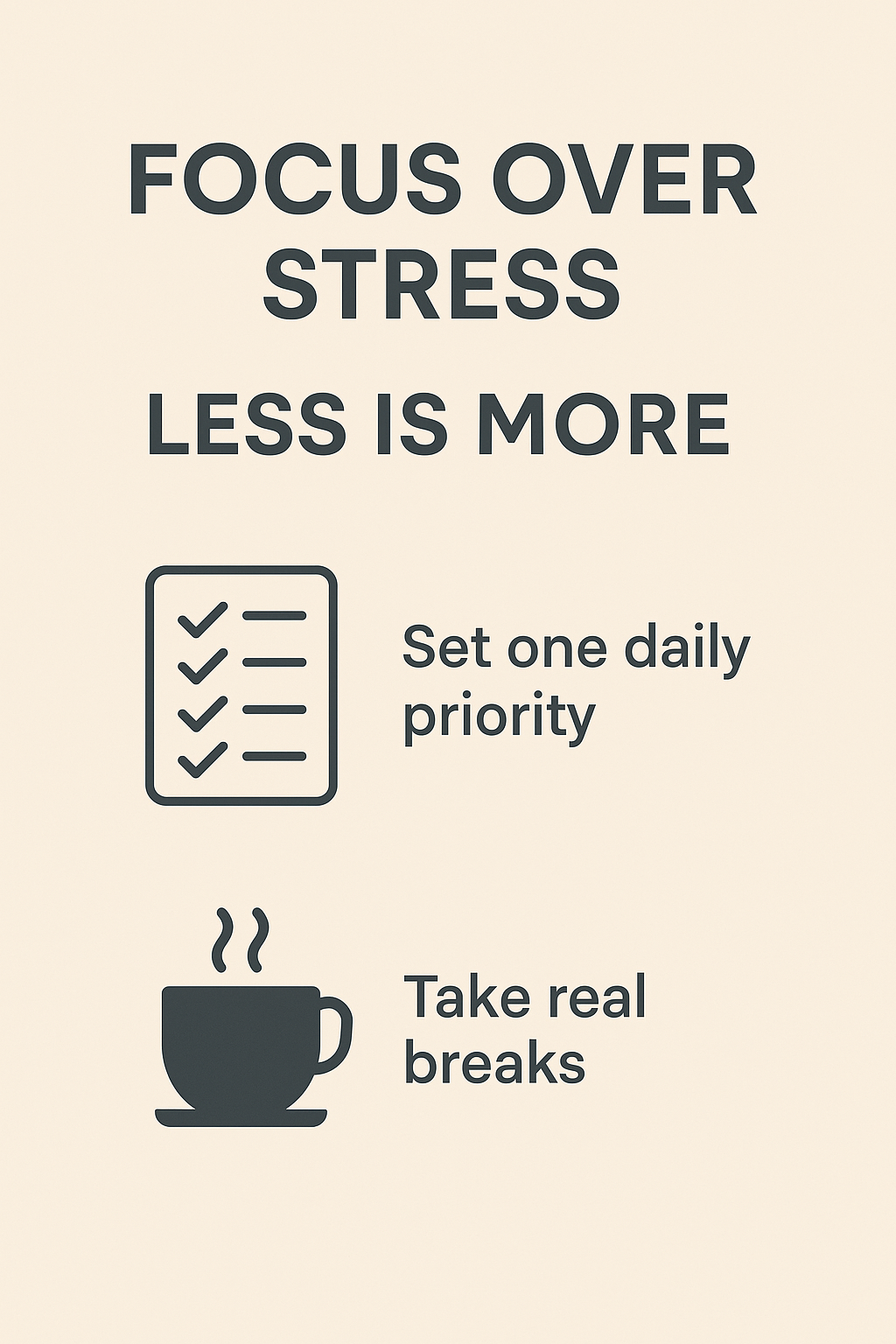Focus over Stress – Why Less is Often More | Bayard Coaching
- Less is more: Setting clear priorities reduces stress and increases results.
- Focus creates clarity: Doing fewer things with more intention beats endless multitasking.
- Science confirms: multitasking lowers productivity significantly.
- Practical coaching tips can help you reclaim energy and attention.
- More insights here: Focus & Flow Retreat Circle™
📋 Table of Contents
- Why we try to do too much
- What science says about focus
- 5 practical tips to reduce stress
- Comparison: Multitasking vs. Focused Work
- How to integrate focus into daily life
- Conclusion
Why we try to do too much
Do you ever feel like your day is too short for all the tasks on your list? Modern life rewards “more”—more projects, more connections, more goals. But the truth is: doing too much at once makes us less productive and more stressed.
“You can do anything, but not everything.” — David Allen
In coaching sessions, I often hear how clients feel overwhelmed by the sheer amount of possibilities. The key is not to do more, but to do the right things—and fewer of them.
What science says about focus
A Harvard Business Review study found that productivity can drop by up to 40% when we try to multitask. In other words: multitasking is a myth.
Researchers confirm: focused work in clear blocks of time boosts both efficiency and wellbeing.
5 practical tips to reduce stress and build focus
- 1. Choose one daily priority: Write down the single most important task each morning.
- 2. Work in focus blocks: 25–50 minutes of deep work, then a 5–10 minute break.
- 3. Minimize digital distractions: Silence notifications, keep your phone out of reach.
- 4. Allow real breaks: Walk, breathe, or enjoy a coffee without screens.
- 5. Use a “not-today list”: Decide what you won’t do today—it brings instant relief.
Comparison: Multitasking vs. Focused Work
| Multitasking | Focused Work |
|---|---|
| Constant task-switching | One task at a time |
| Up to 40% productivity loss | More output in less time |
| High stress levels | Calm and clarity |
How to integrate focus into daily life
The secret is not to change everything overnight, but to start small:
- Pick one method (e.g. focus blocks) and test it for a week.
- Attach it to a routine—e.g. “After coffee, I write my daily priority.”
- Track progress visibly—sticky notes, notebook, or an app.
- Schedule focus time for breaks too—less input means more energy.
For a deeper reset: In the Focus & Flow Retreat Circle™, we practice these principles together and help make them stick.
Conclusion
Focus over stress means: fewer tasks, but more impact. Those who set priorities gain calm, energy, and results. “Less is more” is not a cliché—it’s a practical strategy for everyday clarity.
Ask yourself today: What’s my one thing? Then allow yourself to let the rest go.
